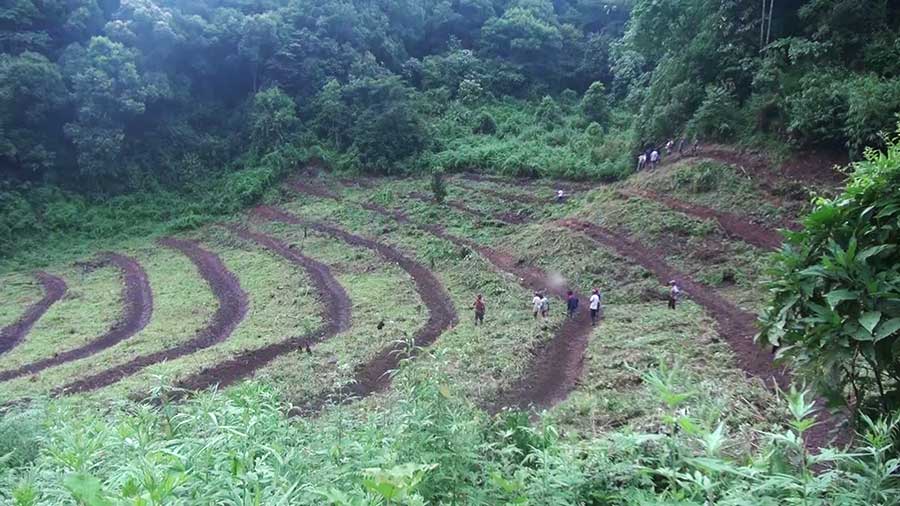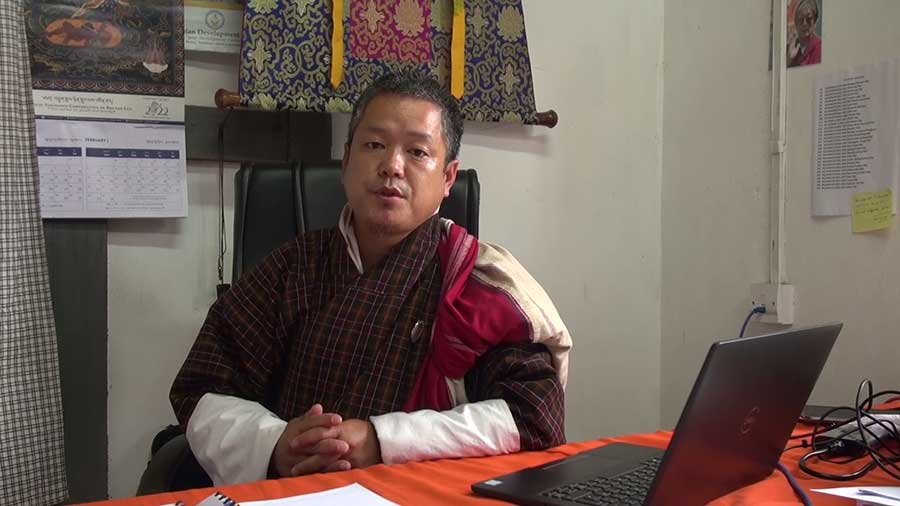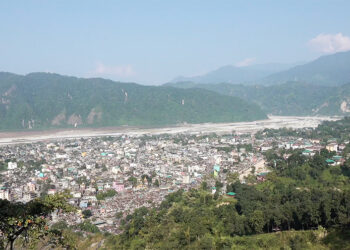
Pedling Tsho or Pedling lake at Kholomri of Dechhenling Gewog in Pema Gatshel is on the verge of disappearance. This happened after residents started cultivation around the lake a few decades ago. But thanks to an initiative by the forestry officials, the residents are now trying to save the dying water body by digging a trench above the lake.
Residents of Kholomri started digging trenches to keep water flowing for Ridzomo and Dungchilu residents below the lake. Each of the trenches are a foot deep and up to three feet wide. They will collect the rainwater and their highly permeable soils will allow the water to quickly seep into the lake. In addition, they have also dug pits to store rainwater.
The lake is a wetland spanning almost a hundred acres.
But residents of Kholomri, Dechhenling-Gonpowong and Shingchongri chiwogs started clearing the forests and bushes and began cultivating paddy on some portions of the wetland a few decades ago.
In a bid to save the lake, the government provided land substitution and stopped farmers from cultivating nearby the water body.
“In the past, when it rains the water overflows and the lake started drying up during the dry season. Now, after digging the trenches, we are expecting water to seep into the ground which will help restore the lake,” said Tshering Dorji, a resident of Dechhenling Gewog.
“The lake used to be a large water body in the past. But with an increase in population over the years, people started cultivating which has caused the lake to dry up gradually. We used to cultivate paddy nearby and had to stop it fearing the water sources may dry and that we would eventually be forced to abandon the place due to water shortage,” said Tsetor, another resident of Kholomri in Dechhenling Gewog.
The United Nations Development Programme country office, the Royal Society for Protection of Nature and the Department of Forest and Park Services are supporting the revival project.
According to the Gewog Administration, besides saving the water body, the revival project will boost the livelihood of farmers. They are clearing a trekking route to attract tourists in the community. Although the wetland doesn’t host endangered animal or plant species, for now, the Rufous-necked Hornbill can be sighted in the area.

“We are planning to welcome tourists in the future. For that, we have developed a hiking trail. When we talk about tourism, we mean both foreign and domestic tourists. They can visit the lake and hike or even have a picnic. We are developing a five-kilometre-long trekking route around the lake,” said Dechhenling Gup Jamba Phuntsho.
The revival project first began in 2014 with the villagers enclosing the lake with fencing. Later, they started the construction of the trekking trail, plantation of fruit trees, and installation of rainwater harvesting technologies.
The lake revival project will benefit around 300 households of three chiwogs in Dechhenling Gewog. The Royal Society for Protection of Nature also developed a guideline on the management of the lake for the community.
Thinley Dorji, Pema Gatshel
Edited by Phub Gyem







